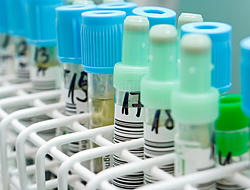Measurement Standards and Measurement Technology To Support Innovation in Healthcare

Challenge
Across the healthcare system—from research to diagnosis and treatment to electronic medical records—reliable measurement tools and effective standards underpin efforts to rein in costs and speed clinical applications of new discoveries. Even though about 70 percent of healthcare decisions are based on results of clinical laboratory tests, internationally recognized reference methods and materials exists for only about 10 percent of the 700 most routinely run tests. For example, quantitative benchmark references do not exist for X-rays, MRI, and other medical imaging technologies, that account for about $50 billion in annual healthcare expenditures.
Proposed NIST Program
NIST aims to eliminate measurement-related barriers that can impede the translation of expanding knowledge of health and disease into practical, cost-effective, preventive, diagnostic, or therapeutic benefits. Under this proposed initiative, NIST will:
- Develop higher-order reference methods and materials as well as other needed measurement tools to support improved accuracy and reproducibility of current clinical diagnostics;
- Enable quantitative and comparable medical imaging on current and future imaging platforms; and
- Develop the tools necessary to enable, evaluate, and validate the next generation of medical technologies.
Expected Impacts
Improvements in the accuracy and precision of clinical and diagnostic measurements and in technologies for accurately and reliably quantifying and comparing features in medical images will:
Increase the accuracy of laboratory testing and reduce the volume of misdiagnoses and other errors and the number of duplicative tests;
Improve monitoring of disease progression and therapeutic response;
Enable earlier detection of disease, facilitating more effective treatment decisions; and
Improve the reliability and accuracy of clinical trial data.

